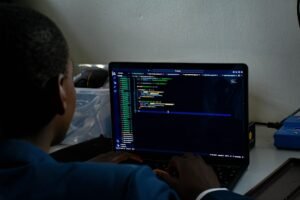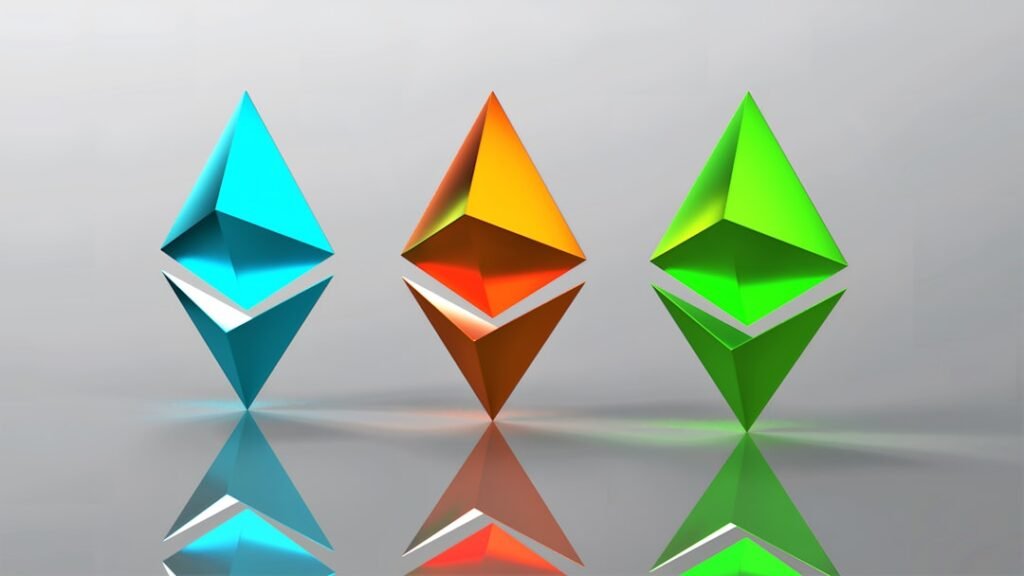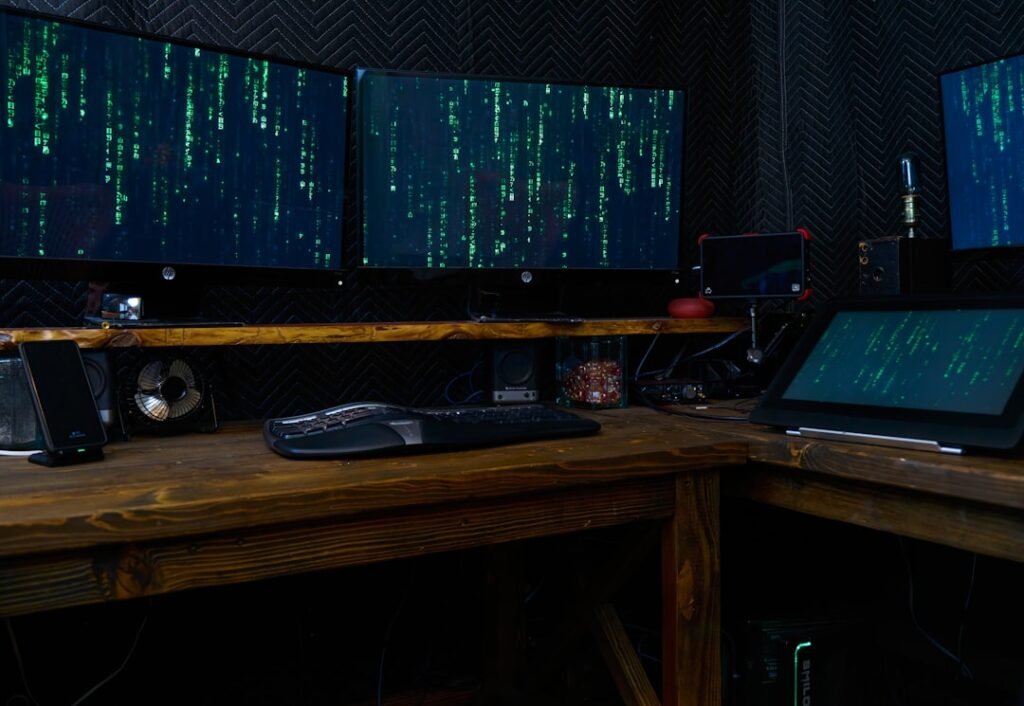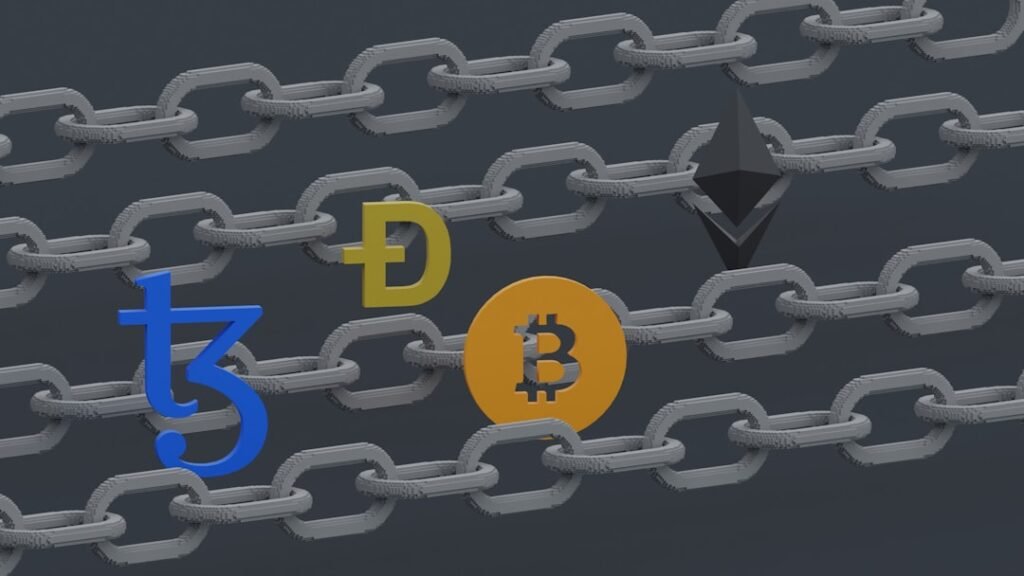The internet is undergoing its most profound evolution since the dawn of the social media age. We are moving from Web2—the internet of centralized platforms and user-generated content—to Web3, the internet of decentralized ownership and verifiable value. This isn’t merely an incremental update; it’s a fundamental paradigm shift built on the principles of blockchain, cryptography, and user sovereignty.
For developers, this transition represents a once-in-a-generation opportunity. The demand for skilled Web3 developers is exploding across every industry, from finance to gaming to art. Yet, the path to becoming a proficient Web3 builder can seem opaque, littered with complex jargon and rapidly changing technologies.
This comprehensive guide serves as your structured learning path. It demystifies the world of Web3 development, breaking it down into a logical progression of concepts and skills. Whether you are a seasoned software engineer looking to pivot or a newcomer to code, this roadmap will take you from foundational principles to building and deploying your first Decentralized Application (DApp).
Phase 1: Mastering the Foundational Concepts (The “Why”)
Before writing a single line of code, you must grasp the core philosophies that underpin Web3. Understanding why this technology exists is more important than memorizing any specific library or framework. These are not just technical features; they are the new rules of the digital world.
The Blockchain Trilemma
At the heart of Web3 is the blockchain, a distributed, immutable ledger. Every developer must understand the core trade-offs inherent in blockchain design, known as the “Blockchain Trilemma.”
- 權力下放: Instead of data residing on a single server owned by a company (like Google or Facebook), it is distributed across a network of thousands of computers (節點). No single entity has control.
- 安全性: The network is secured through cryptography and a consensus mechanism (like Proof-of-Work or Proof-of-Stake). To alter a record, an attacker would need to control a majority of the network’s computing power, making it prohibitively expensive and practically impossible on major networks.
- 可擴充性: This refers to the network’s ability to handle a large volume of transactions quickly (Transactions Per Second, or TPS). It is often the biggest challenge, as achieving high decentralization and security can slow down transaction speeds.
Most blockchains are forced to compromise on one of these three pillars. Understanding this trade-off is critical to choosing the right platform for your DApp.
Key Principles to Internalize
- Immutability: Once data is written to a blockchain and confirmed, it cannot be altered or deleted. This creates a permanent, auditable record of history.
- Transparency: Most public blockchains (like Ethereum) are fully transparent. Anyone can view the transactions and smart contract code on the network, fostering a new level of trust through verification.
- Permissionless: Anyone can participate in the network, run a node, deploy a smart contract, or use a DApp without needing approval from a central authority.
- Composability: Often called “money legos,” Web3 protocols are like open APIs by default. A DApp can be built by combining and integrating functions from other existing DApps, leading to rapid and exponential innovation.
Phase 2: Acquiring the Core Technical Stack (The “What”)
With a solid conceptual foundation, you can now begin to learn the specific technologies that bring Web3 to life. This phase is about assembling your developer toolkit.
Choosing a Blockchain Platform
While Bitcoin pioneered the technology, 以太坊 is the undeniable center of the Web3 development universe. It introduced the concept of 智慧合約, which are the building blocks of all DApps. For any new developer, mastering the Ethereum ecosystem is the highest-value starting point.
However, the landscape is vast and growing. Understanding the alternatives is crucial for making informed architectural decisions.
| Platform | Consensus Mechanism | Core Language | Key Selling Point | Common Use Case |
|---|---|---|---|---|
| 以太坊 | Proof-of-Stake (PoS) | Solidity, Vyper | Unmatched decentralization, security, and developer ecosystem. | DeFi, NFTs, DAOs |
| 索拉納 | Proof-of-History (PoH) | Rust | Extremely high transaction speed (TPS) and low fees. | High-frequency DeFi, NFTs |
| Polygon (PoS) | Proof-of-Stake (PoS) | 穩固性 | Ethereum “Layer 2” scaling solution; low fees and fast transactions with ETH compatibility. | Gaming, DApps needing low cost |
| Avalanche | Snowman (PoS variant) | 穩固性 | High throughput and fast finality through “subnets.” | Enterprise solutions, DeFi |
戰略指導: Begin with Ethereum and Solidity. The mental models and skills you learn are directly transferable to the vast majority of other leading blockchain platforms (often called EVM-compatible chains).
Learning Smart Contract Development with Solidity
A smart contract is a self-executing program with the terms of the agreement between buyer and seller being directly written into lines of code. The code and the agreements contained therein exist across a distributed, decentralized blockchain network.
穩固性 is the dominant language for writing smart contracts on Ethereum and other EVM-compatible chains. It is a high-level, contract-oriented language with syntax similar to C++ and JavaScript.
Here is a simple example of a Solidity smart contract that acts as a counter:
// SPDX-License-Identifier: MIT
pragma solidity ^0.8.20;
/**
* @title SimpleCounter
* @dev A very simple smart contract to store and increment a number.
*/
contract SimpleCounter {
uint256 public number; // A state variable stored permanently on the blockchain
/**
* @dev Sets the initial value of the number to 0.
*/
constructor() {
number = 0;
}
/**
* @dev Increments the number by a given amount.
* This is a "write" function that changes the state and costs gas.
*/
function increment(uint256 _amount) public {
number = number + _amount;
}
/**
* @dev Resets the number back to 0.
*/
function reset() public {
number = 0;
}
}Key Concepts in this code:
- pragma solidity ^0.8.20;: Specifies the compiler version.
- contract SimpleCounter { … }: Defines the smart contract.
- uint256 public number;: Declares a state variable. This piece of data is stored permanently on the blockchain. The public keyword automatically creates a “getter” function so anyone can read its value.
- increment(): A function that writes to the blockchain. Executing this function changes the state of the number variable and requires a transaction fee, known as gas.
Essential Developer Tools
You cannot develop in a vacuum. The Web3 ecosystem has a mature set of tools to streamline the development, testing, and deployment process.
- Development Environments: Hardhat 和 Truffle are the two leading frameworks. They provide tools for compiling, testing, and deploying your smart contracts to a local blockchain or a live network. Hardhat is currently the more popular choice for new projects due to its flexibility and powerful testing features.
- Node Providers: To interact with the blockchain, your DApp needs to connect to a node. Running your own node is complex. Services like Infura 和 Alchemy provide reliable, high-availability access to the blockchain via an API.
- Wallets: A crypto wallet, like MetaMask, is the user’s gateway to Web3. It holds their private keys, manages their assets, and allows them to sign and approve transactions to interact with your DApp.
Phase 3: Building a DApp (The “How”)
Now it’s time to connect the dots and understand the full architecture of a Decentralized Application. A DApp consists of a frontend (the user interface) and a backend (the smart contracts on the blockchain).
The DApp Architecture
- Frontend (Client-Side): This is what the user sees and interacts with. It’s typically built using modern web frameworks like React, Vue, or Svelte. The key difference from a Web2 application is how it communicates with the backend.
- Ethers.js / Web3.js: These are JavaScript libraries that are the crucial bridge between your frontend and the Ethereum blockchain. They allow your UI to:
- Connect to a user’s MetaMask wallet.
- Read data from your smart contracts (e.g., get the current value of number in our SimpleCounter).
- Prompt the user to sign and send transactions to write data to your contracts (e.g., call the increment() function).
- Backend (Smart Contracts): As discussed, this is your application logic living immutably on the blockchain.
- (Optional) Decentralized Storage: For storing large files like images, videos, or metadata (e.g., for an NFT), putting them directly on the blockchain is prohibitively expensive. Instead, developers use decentralized storage solutions like IPFS (InterPlanetary File System) 或 Arweave and store only the link to that file on the blockchain.
This structure creates a powerful separation: the business logic is decentralized and unstoppable, while the user interface can be updated and hosted like any traditional web app.
The Step-by-Step Learning Roadmap
Here is a practical, project-based timeline for your learning journey.
| Timeline | Focus Area | Key Objectives & Projects |
|---|---|---|
| Months 1-2 | Web2 & Crypto Foundations | – Master JavaScript/TypeScript fundamentals. <br> – Learn a frontend framework (React is recommended). <br> – Read the Bitcoin and Ethereum whitepapers. <br> – Actively use MetaMask to interact with DApps. |
| Months 3-4 | Solidity & Smart Contract Basics | – Complete a Solidity fundamentals course (e.g., CryptoZombies, Patrick Collins’ courses). <br> – Set up a Hardhat environment. <br> – Write and test simple contracts (e.g., voting, multi-sig wallet). <br> – Deploy your first contract to a testnet. |
| Months 5-6 | Building Your First DApps | – Learn Ethers.js to connect a React frontend to your smart contracts. <br> – Build a simple DApp: a public guestbook, a crowdfunding (ICO) platform. <br> – Build an NFT minting DApp, learning about ERC-721 standards and IPFS for metadata. |
| Months 7+ | Advanced Topics & Specialization | – Explore DeFi concepts: lending protocols, decentralized exchanges (DEXs). <br> – Learn about Layer 2 scaling solutions and their implications. <br> – Study smart contract security patterns and common vulnerabilities (re-entrancy attacks). <br> – Contribute to an open-source Web3 project. |
The Future is Yours to Build
The journey into Web3 development is challenging, but it is also immensely rewarding. You are not just learning a new programming language; you are learning to build systems that are inherently more open, equitable, and user-centric than anything that has come before.
The tools are ready, the community is collaborative, and the demand for builders has never been higher. By following this structured path—mastering the concepts, learning the stack, and building consistently—you can position yourself at the forefront of the next digital revolution. The decentralized future is not waiting to be discovered; it is waiting to be built. Start today.
More Than Just Hype: 7 Disruptive Web3 Development Use Cases to Inspire Your Next Business Blueprint
For years, the mainstream perception of Web3 has been dominated by the speculative volatility of cryptocurrencies and the frenetic hype of NFT profile pictures. For many business leaders and entrepreneurs, this has made it difficult to see the signal through the noise. But to dismiss Web3 as mere speculation is to miss one of the most significant technological shifts of our time.
At its core, Web3 development is not about creating digital currencies; it’s about building a new foundation for the internet—one based on verifiable ownership, decentralized governance, and censorship-resistant infrastructure. It provides a toolkit for rewiring how value is created, exchanged, and controlled online.
This is not a distant, academic concept. It is happening now, creating tangible solutions and disruptive business models that were impossible in the centralized world of Web2. This analysis moves beyond the hype to explore seven practical, industry-changing Web3 use cases. For each, we will dissect the Web2 problem, the Web3 solution, and the business blueprint it unlocks, providing a strategic guide for your next venture.
1. Decentralized Finance (DeFi): Rebuilding the Financial System
- The Web2 Problem: Traditional finance is defined by intermediaries. Banks, brokers, and payment processors sit in the middle of every transaction, adding cost, friction, and delays. Access is gatekept, settlement can take days, and billions of people worldwide remain unbanked or underbanked.
- The Web3 Solution: DeFi removes the intermediaries. It uses smart contracts on blockchains like Ethereum to create automated, transparent, and permissionless financial services.
- Lending & Borrowing: Users can lend their assets to a smart contract-managed liquidity pool to earn interest or borrow from it by providing collateral, all without a bank’s approval.
- 分散式交易所 (DEX): Automated Market Maker (AMM) smart contracts allow users to trade assets directly from their own wallets, eliminating the need for a centralized exchange to hold their funds.
- Stablecoins: Cryptocurrencies pegged to the value of real-world assets (like the US Dollar) provide a stable medium of exchange within the volatile crypto ecosystem.
- Real-World Examples: Aave (lending), Uniswap (DEX), MakerDAO (creator of the DAI stablecoin).
- Business Blueprint:
- Niche Lending Protocols: Create specialized lending markets for underserved assets (e.g., tokenized real-world assets, gaming NFTs).
- Yield Aggregators: Build platforms that automatically move user funds between different DeFi protocols to maximize their returns (yield farming).
- DeFi 保險: Develop protocols that allow users to buy coverage against smart contract failures or hacks.
2. NFTs and the Verifiable Creator Economy
- The Web2 Problem: Digital content is infinitely copyable. Artists, musicians, and writers post their work online, only to lose control over its distribution and monetization. Platforms like YouTube and Spotify take a significant cut, and creators are often left with a fraction of the value they generate.
- The Web3 Solution: Non-Fungible Tokens (NFTs) are unique, verifiable proofs of ownership for digital (or physical) assets, recorded on a blockchain. An NFT is not the asset itself; it is the unforgeable title deed to that asset.
- Verifiable Scarcity: An artist can mint a single 1-of-1 piece or a limited edition of 100 prints, and the scarcity is enforced by the smart contract.
- Royalties on Secondary Sales: Smart contracts (like the ERC-721 standard) can be programmed to automatically send a percentage of every future resale back to the original creator, creating a perpetual revenue stream.
- NFTs as Access Keys: An NFT can function as a verifiable ticket to an event, a membership pass to an exclusive community, or a key to unlock premium content.
- Real-World Examples: OpenSea (marketplace), Art Blocks (generative art), Audius (decentralized music streaming).
- Business Blueprint:
- Fan Engagement Platforms: Build services for musicians or sports teams to issue NFT-based loyalty cards that offer exclusive perks.
- Digital Ticketing Systems: Create a platform that uses NFTs for event tickets, eliminating fraud and allowing venues/artists to capture a share of the secondary market.
- Token-Gated Content Platforms: Develop a Substack or Patreon-like service where access to content is granted only to holders of a specific NFT.
3. Decentralized Autonomous Organizations (DAOs)
- The Web2 Problem: Traditional corporate structures are opaque, hierarchical, and slow to adapt. Decision-making is concentrated at the top, and stakeholders (customers, community members) have little to no say in the organization’s direction.
- The Web3 Solution: A DAO is essentially an internet-native organization whose rules and governance are encoded in smart contracts on a blockchain.
- Shared Treasury: Funds are held in a multi-signature treasury smart contract, which can only be accessed with the approval of its members.
- Governance Tokens: Membership and voting power are often represented by tokens. Proposals are submitted by the community, and token holders vote on whether to approve them.
- Transparent Operations: All proposals, votes, and treasury transactions are recorded on the blockchain, making the organization’s operations completely transparent and auditable.
- Real-World Examples: MakerDAO (governs the DAI stablecoin), Friends With Benefits (a social club DAO), Gitcoin (funds public goods for Ethereum).
- Business Blueprint:
- DAO Tooling: The “Picks and Shovels” play. Build user-friendly platforms for creating, managing, and governing DAOs (e.g., treasury management, voting interfaces, payroll).
- Investment DAOs (Venture DAOs): Form a collective of members who pool capital to invest in early-stage Web3 projects, with all decisions made on-chain.
- Service DAOs: Create a decentralized agency (e.g., for marketing, design, or development) where members collectively vote on which client projects to take on and how to distribute the revenue.
4. Gaming (GameFi) and Player-Owned Economies
- The Web2 Problem: In traditional gaming (e.g., Fortnite, World of Warcraft), players spend thousands of hours and dollars acquiring in-game items (skins, weapons, characters) that they don’t truly own. These assets are trapped on the game’s centralized server; they cannot be sold or transferred. If the game shuts down, the player’s investment is lost.
- The Web3 Solution: GameFi integrates NFTs and cryptocurrencies into games, giving players true ownership of their in-game assets.
- Player-Owned Assets: Every unique item is an NFT in the player’s personal wallet. They can freely trade, sell, or even use these assets in other compatible games.
- Play-to-Earn (P2E): Game mechanics can reward players with fungible tokens (cryptocurrency) for achieving certain goals, creating a real economic incentive to play.
- Community-Governed Game Worlds: DAOs can be used to allow players to vote on game updates, new features, and the future direction of the game’s universe.
- Real-World Examples: Axie Infinity (pioneering P2E game), The Sandbox (decentralized virtual world), Star Atlas (upcoming space exploration MMO).
- Business Blueprint:
- NFT Interoperability Tools: Build platforms or standards that allow gaming assets from one game to be used or recognized in another, creating a “metaverse” economy.
- Gaming Guilds & Scholarship Platforms: Create organizations that purchase high-value gaming NFTs and lend them to players in exchange for a share of their in-game earnings.
- In-Game Asset Marketplaces: Develop specialized marketplaces for trading gaming NFTs, complete with analytics, pricing data, and lending features.
5. Supply Chain Management & Provenance
- The Web2 Problem: Global supply chains are notoriously complex and opaque. It is difficult for consumers and businesses to verify the origin, journey, and authenticity of a product, leading to counterfeiting, fraud, and ethical concerns (e.g., conflict minerals, unfair labor practices).
- The Web3 Solution: By recording key events in a product’s lifecycle on an immutable blockchain, Web3 creates a transparent and trustworthy “digital twin” for a physical item.
- Each product is assigned a unique digital identity (often represented by an NFT).
- At each step of the supply chain (e.g., from farm to factory to port to retailer), a new transaction is logged on the blockchain, creating an unalterable audit trail.
- Consumers can scan a QR code on the final product to see its entire journey and verify its authenticity.
- Real-World Examples: VeChain (platform focused on supply chain), IBM Food Trust (tracking food from farm to store).
- Business Blueprint:
- Luxury Goods Authentication: Create a platform for high-end watch, handbag, or wine brands to certify their products, combatting the multi-billion dollar counterfeit market.
- Ethical Sourcing Verification: Build a solution focused on specific industries like coffee, diamonds, or textiles, allowing consumers to verify claims of “organic” or “fair trade.”
- Pharmaceutical Tracking: Develop a system to track prescription drugs from manufacturer to pharmacy, preventing counterfeit medications from entering the supply chain.
6. Decentralized Identity (DID) & Data Sovereignty
- The Web2 Problem: Our digital identities are fragmented and controlled by corporations. We use “Sign in with Google” or “Log in with Facebook,” giving these companies access to our data and making them a central point of failure. You don’t own your digital identity; you rent it.
- The Web3 Solution: Decentralized Identity (or Self-Sovereign Identity) separates identity from platforms. A user’s identity is stored in their personal crypto wallet, which they control.
- Users can selectively disclose pieces of information (verifiable credentials) without revealing their entire identity. For example, you could prove you are over 21 without revealing your name, date of birth, or address.
- This eliminates the need for dozens of passwords and puts the user back in control of their personal data.
- Real-World Examples: ENS (Ethereum Name Service, creating human-readable names for wallets), SpruceID, Polygon ID.
- Business Blueprint:
- Passwordless Authentication Systems: Offer a service for websites and apps to integrate “Sign in with Ethereum,” allowing users to log in securely using their wallet.
- KYC/AML Attestation Services: Create a platform where a user completes a KYC check once, receives a verifiable credential in their wallet, and can then present that proof to any DApp without re-submitting their documents.
- Personal Data Markets: Build platforms where users can choose to monetize their anonymized data by granting temporary, paid access to researchers or marketers, turning a liability into an asset.
7. Decentralized Physical Infrastructure Networks (DePIN)
- The Web2 Problem: Building large-scale physical infrastructure (e.g., telecom networks, mapping services, energy grids) requires massive upfront capital investment, typically only available to large corporations. This leads to monopolies, high prices, and limited coverage in less profitable areas.
- The Web3 Solution: DePIN uses crypto-token incentives to coordinate and reward individuals and small businesses for contributing to a shared infrastructure network.
- Individuals are rewarded with tokens for deploying hardware (like a wireless hotspot or a sensor) or contributing data (like street-level imagery from a dashcam).
- This creates a crowdsourced, bottom-up alternative to centrally-planned infrastructure, often at a fraction of the cost.
- Real-World Examples: Helium (crowdsourced 5G and IoT wireless network), Hivemapper (crowdsourced global mapping network), Render (decentralized GPU computing network).
- Business Blueprint:
- Decentralized Energy Grids: Create a platform that rewards homeowners with solar panels for selling their excess energy back to the community via a tokenized microgrid.
- Crowdsourced Weather Data: Design a network that pays individuals to deploy small weather stations, creating a hyper-local and highly accurate weather data source for agriculture and insurance.
- Bandwidth Sharing Networks: Build a system where users can get paid in tokens for securely sharing their unused home internet bandwidth.
Your Blueprint for the Decentralized Future
These seven use cases are not science fiction. They are active, growing ecosystems with real products and passionate communities. They demonstrate that Web3 development is a powerful tool for solving fundamental problems of trust, ownership, and coordination.
The opportunities are immense for entrepreneurs and business leaders who look beyond the hype and see the underlying architectural shift. The question is no longer 如果 these technologies will be disruptive, but 如何 you will leverage them. Analyze the inefficiencies and gatekeepers in your own industry, and ask yourself: “What problem could I solve if I had a shared, trusted, and transparent ledger?” The answer to that question could be your next business blueprint.












